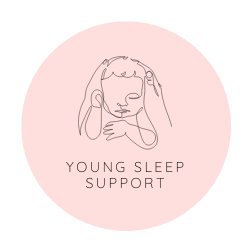Surviving Parental Exhaustion: Self-Care and Gentle Strategies for Tired Parents Everywhere
- 0 comments
- by Shannon
Welcome to the “No-Sleep Club”
If you’re reading this, you’re probably running on fumes, microwaved coffee, and pure love (emphasis on the love… and the fumes). Maybe you feel like you’ve joined the exclusive “no-sleep club” against your will and you can’t find the exit. Spoiler: You are not alone.
Parental exhaustion is real, relentless, and absolutely nothing to be ashamed of.
So how do you make it through—especially when you want rest without losing your values (or your sanity)? Stick with me. We’re going to talk practical, guilt-free survival strategies for those of you running on hope and not much else.
How to Spot Parental Burnout—And Why It’s Not Your Fault
Let’s call it what it is: Parental burnout is next-level tired, plus overwhelm, plus “is it just me?” vibes.
Look for:
- You’re snappy, or teary
- Your brain is fried (can’t remember the last time you felt actually awake)
- Even rest feels like work
Sound familiar? You are NOT doing parenting wrong. You’re living a reality that piles up fast, especially if you:
- Are up all night with a little one
- Face pressure to “fix” sleep (but you don’t want to sleep train)
- Juggle work/kids/house… and forget when you last did something for yourself
You’re not broken. This is what happens when the demands on a real-life parent outstrip the support and resources around them.

Step 1: Permission to Need Care, Too
Let’s clear something up: Wanting a break doesn’t mean you love your child any less. Wanting rest isn’t selfish. It’s necessary.
One of the bravest things you can do? Admit you’re exhausted and need support. (Trust me. This is where things start to turn.)
Gentle Survival Strategies for Exhausted Parents
Here’s the big secret: You don’t have to overhaul your whole life. Tiny shifts = big difference. Let’s break it down.
The Micro-Breaks Magic
You don’t necessarily need a spa weekend (it would be nice though right?!); sometimes you just need five actual minutes where nobody touches you.
- Sip your drink while it’s still warm.
- Hide in the loo while your partner watches the kids and scroll memes (zero shame).
- Take three deep breaths (the good kind… in through your nose, out slow).
- Let your child safely watch Bluey so you can do nothing for ten minutes.
These aren’t luxuries. They’re survival hacks. Your nervous system will thank you.
Drop the Superhero Cape (Ask for Help)
You are not meant to do this alone. Really.
- Trade time with a partner—one covers, one rests. Switch. Repeat.
- Text a friend or family member: “I’ll take your toddler next Saturday if you can handle mine this Friday?”
- Let the laundry pile up so you can nap (the world won’t end… promise).
- Consider outside help if you can swing it—even an hour matters.
It takes guts to ask for (or accept) help. But there’s no medal given for solo suffering.
Simplify… Everything
You do not have to cook homemade everything or have a colour-coded family calendar. You just have to get through the day.
- Use paper plates if you feel like it.
- Batch cook pasta, call it “chef’s special” three nights running.
- Lower the bar on “extras”—say no to anything non-essential (even if it’s just this week).
- Let your home look “lived-in.” Because… it is.
Long Game: Building Real Self-Care (That You’ll Actually Do)
Forget bubble baths unless you like them. Real self-care is what refuels you—physically, mentally, and emotionally.
Prioritise Sleep (Yours, Too)
- Trade-off night wakes with your partner.
- Sneak naps (even 20 minutes is helpful).
- Go to bed embarrassingly early, even if it means leaving dishes.
Move Your Body… with Zero Pressure
Exercise does not have to mean Lycra. Try:
- Dancing around the living room, baby in arms
- Walking with the pram and a podcast
- Stretching while your child builds a block tower
Movement helps shift stress, boost endorphins, and (bonus!) sometimes tires out busy little people, too.
Feed Yourself, Not Just the Kids
No, coffee and the last bite of toddler pancake don’t count as “lunch.”
- Make actual meals when you can (but toast is a solid Plan B).
- Keep snacks on hand that aren’t kid food (protein bars, cheese, nuts, whatever you actually like).
- Water > more caffeine (yeah, I said it).
Boundaries: Your Secret Weapon Against Burnout
This part can feel awkward, but it’s powerful. Boundaries = saying no to things that drain you, yes to what you need. Try:
- Saying, “Not today, thanks,” to non-essential outings.
- Making a family “do not disturb” nap hour on weekends.
- Turning off notifications after 8pm.
- Asking your partner for solo time (no guilt required).
Boundaries give you breathing room (and model good self-care for your kiddos, too).

Build Your Village—You Deserve Support
We’re wired for connection, and parenting was never meant to be done in total isolation. Your “village” might look like:
- Trusted family/friends you can call on, even just to vent
- Local playgroups or community centres
- Online parent groups that get it (no judgment, just solidarity)
- Professional help where needed (counsellor, sleep coach, therapist)
Mindset Shifts (and Busting the Guilt Monster)
Exhaustion means you’re working hard in tough conditions, not that you’re lacking.
- Your child needs you to be okay, not perfect.
- You’re already showing up in ways your little one will remember (even on the rough days).
When you hear that voice in your head piling on guilt for not “doing enough”?
Reminder: Surviving is enough.
For the Record: It’s OK to Want More Sleep
You’re not a bad parent if you wish for more sleep (no one functions when they’re up every hour). Sometimes gentle tweaks can make a world of difference, and sometimes it’s about holding steady until things shift.
If you need practical help with sleep—especially if you’re not interested in sleep training—I’ve got you. My approach is all about sleep and attachment, with real, doable strategies:
- Check out my Gentle Sleep Guides and Mini-Courses
- Want a tailored plan? My 1:1 support can give you the clarity and confidence you’re craving
You don’t have to lose yourself to get your child sleeping better. Promise.
Gentle Reminders for the Hardest Days
- You deserve rest, care, and support too
- There is no single “right” way to do this
- It’s normal to find this hard (and normal to need help)
- Little shifts add up—even five minutes of peace counts
And finally, if no one’s told you this today:
You’re doing a great job. Even on the days when it doesn’t feel like it.


